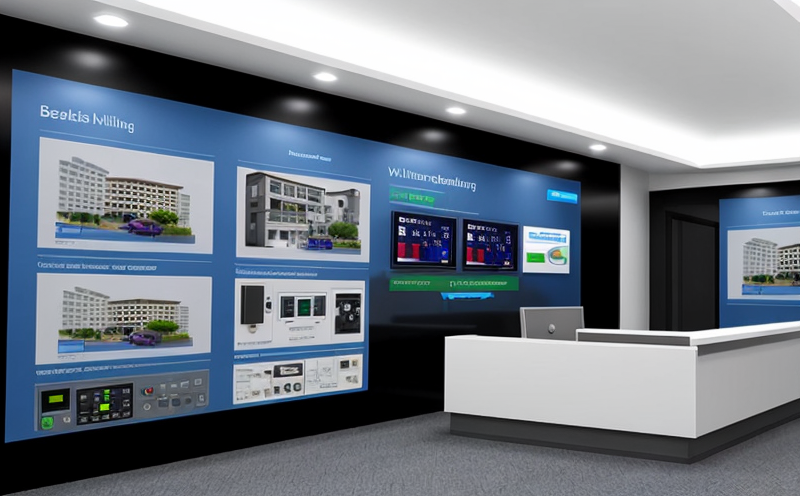ISO 16739-1 BIM Data Exchange Testing
The International Organization for Standardization (ISO) has introduced ISO 16739 as a comprehensive framework to ensure the quality, interoperability, and sustainability of Building Information Modeling (BIM). Specifically, ISO 16739-1:2018 focuses on data exchange protocols that enable seamless integration between various stakeholders involved in building projects. This standard is crucial for ensuring that BIM models are accurately transmitted from one software to another without loss of information or functionality.
In the realm of smart buildings and automation systems, accurate and reliable data exchange plays a pivotal role in optimizing energy efficiency, enhancing occupant comfort, and improving maintenance processes. The testing of data exchanges according to ISO 16739-1 ensures that all parties—from architects and engineers to facility managers—have access to consistent, high-quality BIM data.
The process involves several key steps: identifying the relevant elements within a project model, validating these elements against predefined criteria outlined in ISO 16739-1, then exchanging them between different software applications. Proper testing ensures that all stakeholders can rely on accurate and interoperable data, which is essential for successful implementation of smart building systems.
The importance of this service cannot be overstated, especially as the construction industry increasingly adopts BIM technologies to enhance project management and sustainability efforts. By adhering to ISO 16739-1 standards during data exchange testing, organizations can significantly reduce errors, improve collaboration, and ensure compliance with international best practices.
Our laboratory specializes in providing comprehensive ISO 16739-1 BIM Data Exchange Testing services using advanced tools and methodologies. We work closely with clients to understand their specific requirements and deliver tailored solutions that meet both local and global standards. Whether you're a small firm or an enterprise-level organization, our expertise ensures that your projects are aligned with the latest industry trends and best practices.
Our team of experienced professionals utilizes state-of-the-art testing equipment and software to conduct rigorous tests on BIM models exchanged between different platforms. This includes validating schema compliance, checking for missing or erroneous data fields, and ensuring proper handling of complex geometries and materials. The results are reported in clear, concise documents that provide actionable insights into any discrepancies found during the test process.
By partnering with us for ISO 16739-1 BIM Data Exchange Testing, you can rest assured knowing your projects adhere to the highest standards of quality and interoperability. This not only enhances your reputation but also contributes positively towards achieving sustainable development goals within the built environment.
Industry Applications
| Application | Description |
|---|---|
| Construction Projects | Data exchange testing ensures that all parties involved in a construction project have access to accurate and consistent BIM data, streamlining communication and reducing errors. |
| Sustainable Development Initiatives | By adhering to ISO 16739-1 standards, organizations can contribute to more sustainable building practices by ensuring that BIM models accurately reflect environmental impact assessments and energy efficiency measures. |
| Smart Building Systems | The seamless integration of smart building systems relies heavily on reliable data exchange between various components. Testing according to ISO 16739-1 ensures that these systems function optimally and provide continuous performance. |
| Facility Management | Data exchange testing helps facility managers ensure that BIM data remains current, enabling better decision-making regarding maintenance schedules and operational efficiency. |
International Acceptance and Recognition
The recognition of ISO standards in the global construction industry underscores their importance. ISO 16739-1 has been widely adopted by countries around the world, reflecting its significance as a benchmark for BIM data quality and interoperability.
Many leading organizations have already integrated these standards into their project management processes. Compliance with ISO 16739-1 can help businesses gain competitive advantages by demonstrating commitment to international best practices and fostering trust among clients and partners.
The widespread adoption of this standard also facilitates smoother collaboration between different national markets, ensuring that projects remain consistent regardless of location. This interoperability is particularly valuable in today's increasingly interconnected global economy where cross-border collaborations are common.
Our laboratory plays a crucial role in helping businesses achieve compliance with these internationally recognized standards through our robust testing capabilities and deep understanding of BIM data exchange protocols.
Competitive Advantage and Market Impact
The implementation of ISO 16739-1 BIM Data Exchange Testing can provide significant competitive advantages for organizations operating in the building and infrastructure sectors. Adhering to these standards demonstrates a commitment to excellence, which is increasingly becoming a key factor in winning contracts.
By ensuring that all data exchanged between different platforms meets the required quality levels, companies can minimize risks associated with inaccurate or incomplete information. This enhances trust among clients and stakeholders while also improving overall project outcomes.
The ability to reliably exchange BIM data is particularly important for large-scale projects involving multiple parties. ISO 16739-1 ensures that everyone involved has access to the same accurate information, leading to more efficient workflows and better decision-making throughout the lifecycle of a building or infrastructure project.
Moreover, compliance with these standards can help businesses stand out in competitive markets where sustainability and quality are critical factors. It also opens doors for international collaborations, as organizations from different countries can work together confidently knowing that they share common standards.





